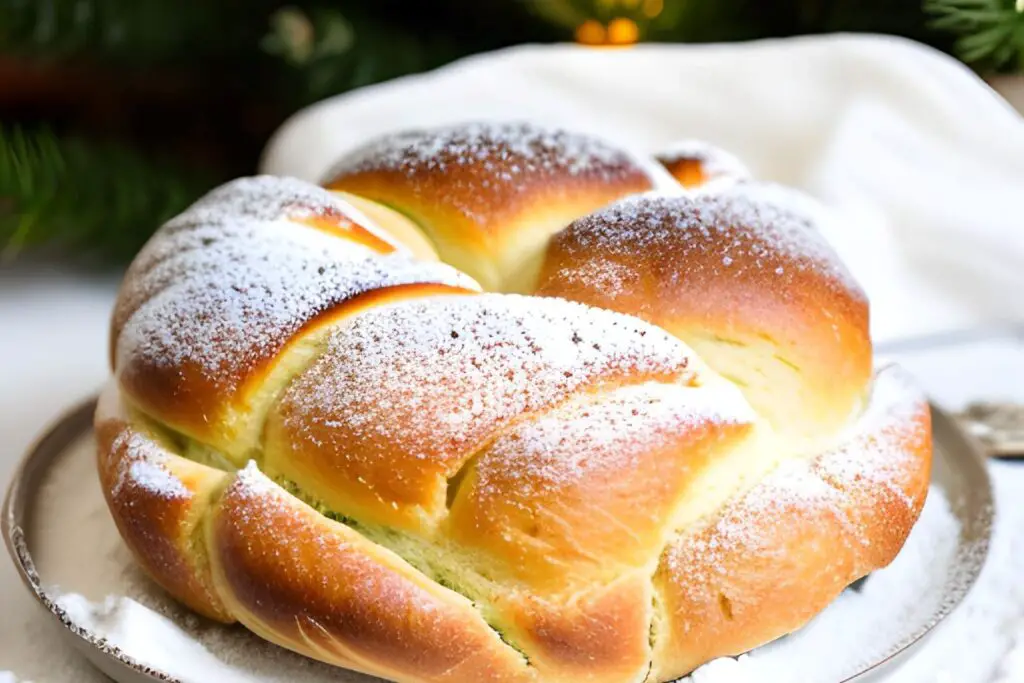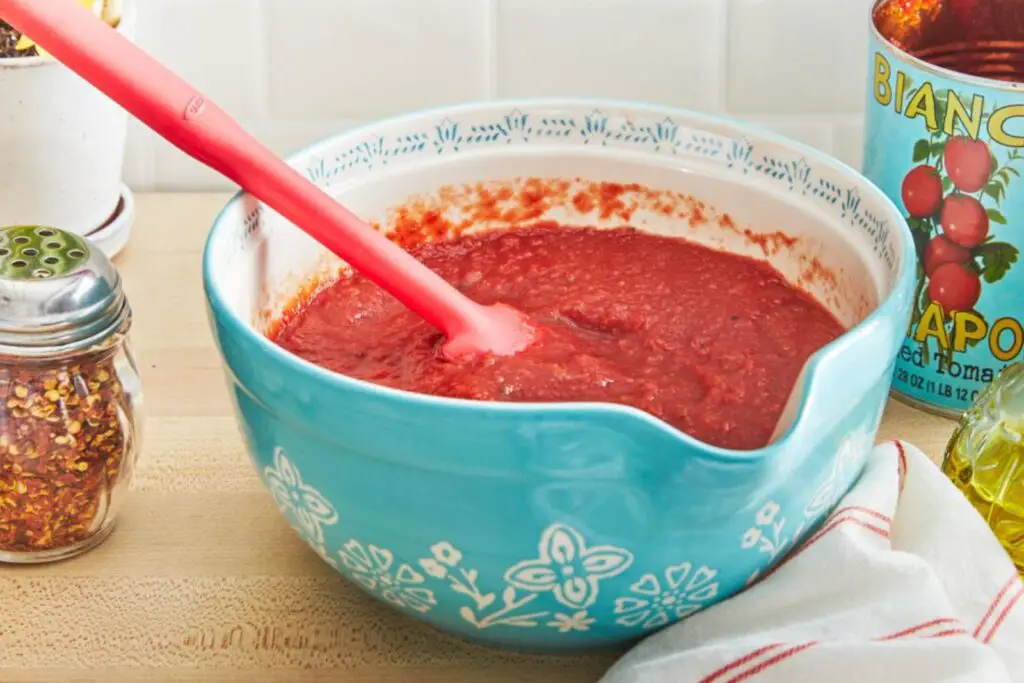
Turkey pot pie, a delectable and hearty dish, embodies the essence of comfort food with its flaky crust and savory filling. This classic creation brings together tender turkey meat, flavorful vegetables, and a creamy sauce, all encased in a golden pastry shell. From family dinners to cozy gatherings, turkey pot pie carries the warmth of tradition and the satisfaction of a complete meal in every bite. However, when preparing a large turkey pot pie or when making it from scratch, it may be challenging to consume it all before it starts to lose its freshness or taste.
Freezing turkey pot pie becomes a practical and efficient method to preserve its delightful flavors and homestyle charm, ensuring that each slice retains its comforting essence and culinary appeal, ready to elevate your meals with the essence of perfectly frozen turkey pot pie, even when a freshly baked creation isn’t readily available or when you crave the hearty goodness of this homemade classic at your convenience. In this guide, we will explore the best practices for freezing turkey pot pie, enabling you to savor the richness of this satisfying dish and elevate your culinary repertoire with the essence of perfectly frozen turkey pot pie, without the need for continuous homemade preparations or frequent kitchen endeavors.
Here are the simple steps to freeze turkey pot pie:
Step 1: Prepare Your Turkey Pot Pie
Before embarking on the process of freezing your turkey pot pie, it’s crucial to ensure that your culinary masterpiece is prepared and assembled to perfection. This initial step sets the foundation for maintaining the pie’s quality throughout the freezing and reheating process.
Cooking and assembling your turkey pot pie before freezing is essential for several reasons:
- Flavor Retention: When the flavors of your pot pie are at their best right from the start, they have a higher likelihood of remaining rich and delicious even after freezing and reheating. This step ensures that all the ingredients have had the chance to meld together and develop their full taste potential.
- Texture Consistency: Cooking your turkey pot pie ensures that the ingredients are fully cooked and tender before freezing. This helps maintain the desired consistency and texture of the filling. If any components are undercooked before freezing, they might not fully cook through upon reheating, affecting the overall enjoyment of the dish.
- Even Distribution: Assembling your turkey pot pie involves distributing the turkey, vegetables, sauce, and other components evenly. This even distribution ensures that every bite you enjoy later will have a balanced combination of flavors and textures.
- Reheating Efficiency: Starting with a fully cooked and assembled pot pie before freezing streamlines the reheating process. When you’re ready to enjoy your frozen pot pie, you can focus on bringing it back to its piping-hot, savory glory without worrying about undercooked parts.
- Time Saving: By preparing your pot pie completely before freezing, you save time when you eventually decide to reheat and enjoy it. This is especially convenient for busy days when you crave a homemade meal but have limited time to spare.
The importance of preparing your turkey pot pie before freezing cannot be overstated. This step ensures that your pot pie maintains its original, delectable flavors and textures, guaranteeing a satisfying culinary experience when you’re ready to enjoy it after freezing. So, take the time to cook and assemble your turkey pot pie to perfection before you move on to the subsequent steps of the freezing process. Your taste buds will thank you!
Step 2: Allow the Pie to Cool
Once your turkey pot pie is cooked and assembled to perfection, the next important step before freezing is to allow it to cool completely. This seemingly simple action plays a crucial role in maintaining the quality and integrity of your pot pie during its time in the freezer.
Here’s why allowing your turkey pot pie to cool is essential:
- Moisture Control: When your pot pie comes out of the oven, it contains a certain amount of residual steam and moisture from the cooking process. If you were to wrap or package the pie while it’s still warm, this moisture could condense and collect inside the packaging as the pie cools down further. This excess moisture can contribute to freezer burn, a condition where ice crystals form on the surface of the food, leading to texture changes and potential flavor loss.
- Packaging Protection: Allowing the pie to cool completely gives the steam and moisture a chance to dissipate into the air, rather than becoming trapped inside the packaging. This helps prevent the formation of ice crystals on the pie’s surface during freezing, which can negatively impact its taste and texture.
- Pie Integrity: Rapid temperature changes, such as placing a hot pot pie directly in the freezer, can cause uneven cooling and potential cracking of the pastry crust. Allowing the pie to cool naturally before freezing reduces the risk of damage to the crust and maintains the pie’s overall structural integrity.
- Taste Preservation: Properly cooling your turkey pot pie before freezing also helps preserve its original flavors. Rapid cooling could trap steam and aromas inside the packaging, potentially altering the taste of the pie when reheated.
- Freezing Efficiency: Cooled pies are less likely to cause drastic fluctuations in the temperature of the freezer, which can impact the quality of other frozen items nearby. It also allows your freezer to work more efficiently in bringing the temperature of the pie down to freezing levels.
Allowing your turkey pot pie to cool completely before freezing is a key step in ensuring the optimal quality of the dish during storage. By giving the pie time to release excess moisture and reach room temperature, you help prevent freezer burn, maintain the pie’s structural integrity, and preserve its delicious flavors. Taking this extra step sets the stage for a satisfying and enjoyable culinary experience when you’re ready to indulge in your frozen turkey pot pie.
Step 3: Portion the Pie
When it comes to freezing your turkey pot pie, a strategic approach can make a significant difference in convenience and flexibility. Portioning your pot pie into individual servings is a smart move that offers benefits beyond mere convenience. This step involves dividing the large pie into smaller, single-serving portions before freezing.
Here’s why portioning your turkey pot pie is a valuable step in the freezing process:
- Reheating Convenience: By portioning your pot pie into individual servings before freezing, you eliminate the need to thaw the entire pie when you only want a single serving. This is particularly handy for busy days when you’re looking for a quick and satisfying meal without the hassle of reheating more than you need.
- Avoiding Over-Thawing: Thawing an entire pot pie when you only need a portion can lead to uneven reheating and potential texture changes. Smaller portions thaw more evenly and quickly, ensuring that each bite retains its original taste and texture.
- Preserving Quality: Each time you thaw and reheat a frozen dish, its quality can be compromised. By portioning your turkey pot pie, you minimize the number of times you need to thaw and reheat the entire dish, thus preserving its overall quality and taste.
- Reduced Waste: Portioning allows you to defrost and enjoy exactly the amount you need, minimizing the chances of leftovers going to waste. This is especially beneficial if you’re cooking for one or if portion sizes vary among family members.
- Customized Servings: Different occasions call for different serving sizes. Portioning your turkey pot pie gives you the flexibility to choose how much you want to reheat, ensuring you’re not tied to a fixed portion size each time.
- Faster Thawing: Smaller portions thaw more quickly than a whole pie, allowing you to enjoy your meal sooner. This is particularly advantageous when you’re short on time or need to satisfy a sudden craving.
In essence, portioning your turkey pot pie into individual servings before freezing offers a range of benefits, including convenience, waste reduction, and customized servings. This approach not only enhances the practicality of reheating but also helps maintain the quality and integrity of your pot pie throughout its time in the freezer. So, when you’re ready to enjoy your delicious, homemade turkey pot pie, you’ll have perfectly sized servings at your disposal.
Step 4: Wrap the Pie Properly
As you proceed with the process of freezing your turkey pot pie, the way you package and protect each portion becomes a critical factor in preserving its taste, texture, and overall quality. This step involves wrapping each portion of the pot pie tightly in either plastic wrap or aluminum foil to ensure an airtight seal.
Here’s why wrapping your turkey pot pie properly is essential:
- Barrier Against Freezer Burn: Freezer burn occurs when the moisture within a frozen item migrates to the surface and crystallizes. By wrapping your pot pie tightly, you create a barrier that prevents excess moisture from escaping and forming ice crystals on the pie’s surface. Proper wrapping helps safeguard against freezer burn, which can negatively impact the taste and texture of your pot pie.
- Maintaining Freshness: Airtight wrapping helps lock in the flavors, aromas, and moisture of your turkey pot pie. This helps maintain the dish’s original taste and prevents it from becoming dry or losing its distinct flavors during freezing.
- Texture Preservation: Well-wrapped pot pies are less likely to experience drastic temperature fluctuations or exposure to air inside the freezer. This contributes to maintaining the desired texture of both the filling and the crust when you eventually reheat the pie.
- Ease of Stacking: Neatly wrapped portions are easier to stack in the freezer, maximizing the available space and helping you stay organized. This can be particularly beneficial if you’re freezing multiple portions or various dishes.
- Protection from Odors: Proper wrapping not only prevents the escape of moisture but also helps protect your pot pie from absorbing other odors present in the freezer. This ensures that your pot pie retains its original, intended flavors.
- Reheating Consistency: When your pot pie is wrapped well, it thaws and reheats more consistently. This helps ensure that every bite you enjoy later is as delicious and satisfying as the first.
Wrapping each portion of your turkey pot pie tightly in plastic wrap or aluminum foil is a crucial step in maintaining the quality of your dish throughout its time in the freezer. This protective barrier guards against freezer burn, helps preserve freshness and texture, and ensures that the pie is ready to deliver a delectable experience whenever you decide to enjoy it. Proper wrapping is a small effort that pays off significantly in terms of taste and satisfaction.
Step 5: Place in Freezer-Safe Containers
As you proceed with the process of freezing your delectable turkey pot pie, an additional option to consider is placing the wrapped portions of the pie into freezer-safe containers. This step offers added protection and organization for your frozen dishes within the freezer environment.
Here’s why using freezer-safe containers can be beneficial:
- Enhanced Protection: While plastic wrap or aluminum foil provides a barrier against moisture and freezer burn, placing your wrapped turkey pot pie portions in freezer-safe containers offers an extra layer of protection. These containers are designed to withstand the extreme cold of the freezer and further safeguard your pot pie from potential air exposure.
- Preventing Cross-Contamination: By using containers, you can prevent potential cross-contamination between different frozen items in your freezer. This is particularly useful if you’re storing multiple types of dishes in the same freezer space.
- Organization: Freezer-safe containers come in various sizes and shapes, allowing you to stack and arrange your frozen pot pie portions neatly. This contributes to better organization and efficient use of available freezer space.
- Reduced Risk of Damage: Placing your pot pie portions in containers can help protect them from physical damage caused by other items in the freezer. This is especially relevant if your freezer tends to get crowded.
- Portion Control: Containers can also aid in portion control. If you prefer larger or smaller portions for specific occasions, using containers with different sizes allows you to customize your servings conveniently.
- Reusability: Most freezer-safe containers are reusable, making them an eco-friendly choice. You can wash and reuse them for various purposes, reducing the need for disposable packaging.
- Convenient Thawing: Containers can serve as convenient vessels for thawing your pot pie portions in the refrigerator. They help contain any potential moisture that may accumulate during the thawing process.
Using freezer-safe containers to house your wrapped turkey pot pie portions is an option that offers several benefits, including enhanced protection, better organization, and added convenience. Whether you choose to use containers or stick with wrapping alone, the goal is to ensure that your pot pie remains in optimal condition until you’re ready to indulge.
Step 6: Label and Date
As you continue the process of freezing your turkey pot pie, taking the time to label and date each package might seem like a small detail, but it plays a significant role in maintaining order, managing freshness, and ensuring an organized freezer space. This step involves clearly marking each package with information about its contents and the date it was frozen.
Here’s why labeling and dating your frozen turkey pot pie portions is important:
- Freshness Monitoring: By labeling each package with the date of freezing, you have a clear record of how long the pot pie has been in the freezer. This is essential for maintaining the quality and taste of the dish. Freezing doesn’t halt the deterioration of food indefinitely; it merely slows down the process. Knowing the freeze date helps you manage freshness effectively.
- Rotation and Consumption: When you have multiple items in your freezer, labeling and dating ensure that you consume them in a timely manner. You can prioritize older items to avoid forgetting about them and potentially letting them remain in the freezer for an extended period.
- Meal Planning: Clearly labeled packages make meal planning more convenient. You can easily identify what’s available and choose your meals accordingly. This reduces guesswork and streamlines your culinary decisions.
- Portion Control: Labels help you know exactly how much of a particular dish is in each package. This is especially useful when you want to thaw and reheat a specific amount without defrosting more than necessary.
- Reducing Waste: Knowing the date of freezing helps you avoid unnecessarily discarding food. If you’re unsure how long a frozen item has been in the freezer, you might hesitate to consume it, leading to potential waste. Clear labeling eliminates this uncertainty.
- Efficient Use of Freezer Space: Labeling prevents you from shuffling through items to determine what’s inside each package. This minimizes the time the freezer door is open, contributing to energy efficiency.
- Quick Identification: When packages are labeled, you don’t need to unwrap them to identify their contents. This is particularly beneficial if you’re storing multiple types of dishes in the freezer.
Labeling and dating your turkey pot pie packages might seem like a small step, but it significantly contributes to efficient freezer organization, food safety, and an enjoyable cooking experience. Clear information about the contents and freeze date ensures that you make the most of your frozen meals and enjoy them at their best.
Step 7: Freeze the Pie
As you near the completion of the process of freezing your delicious turkey pot pie, the physical act of placing the wrapped and labeled portions in the freezer marks a crucial step in preserving the quality and taste of your dish. This step involves carefully positioning the portions within the freezer to ensure proper freezing and prevent potential leakage.
Here’s why properly freezing your turkey pot pie portions is essential:
- Ensuring Even Freezing: Placing the pot pie portions flat in the freezer allows for even and consistent freezing. This prevents the formation of large ice crystals that can negatively affect the texture and taste of the dish.
- Minimizing Air Exposure: Laying the portions flat helps minimize air exposure, which can lead to freezer burn or changes in taste and texture. Proper sealing, wrapping, and positioning contribute to maintaining the pie’s integrity during its time in the freezer.
- Leak Prevention: Placing the portions flat reduces the likelihood of liquids from the pot pie’s filling leaking out during the freezing process. This is especially important if the filling has a high moisture content.
- Efficient Use of Space: Flat, organized portions make the most efficient use of your freezer’s available space. This enables you to maximize the storage capacity and keep your freezer well-organized.
- Easy Retrieval: When pot pie portions are laid flat, they can be easily stacked, making it straightforward to retrieve a specific portion without disrupting the rest. This contributes to a seamless cooking experience when you’re ready to reheat and enjoy your meal.
- Protection of Labels: Properly positioning the portions prevents labels from getting obscured or damaged, ensuring that you can quickly identify the contents and the freeze date when needed.
- Reduced Risk of Contamination: Keeping the portions flat prevents any potential cross-contamination between items in the freezer. This is particularly important if you’re storing different types of frozen dishes.
Freezing your turkey pot pie portions properly by placing them flat in the freezer is a pivotal step in preserving the dish’s quality and taste. By adhering to this practice, you ensure even freezing, prevent leakage, and create an organized freezer space that facilitates easy retrieval and efficient meal planning. As you close this chapter of the freezing process, you’re one step closer to enjoying your homemade pot pie whenever you desire.
How long can turkey pot pie last in the freezer?
A properly stored turkey pot pie can last in the freezer for up to 3-4 months without significant loss of quality. After this period, the flavors and textures might begin to deteriorate. Ensuring airtight packaging and observing the freeze date helps maintain optimal taste and texture.
Other related questions
How do you defrost turkey pot pie?
To defrost a turkey pot pie, transfer it from the freezer to the refrigerator. Allow it to thaw overnight or for about 6-8 hours. Once completely thawed, reheat in an oven preheated to 350°F (175°C) until heated through.
Can you refreeze turkey pot pie?
It is generally safe to refreeze turkey pot pie if it was thawed in the refrigerator and reheated to a safe temperature. However, repeated thawing and refreezing can affect quality. It’s best to avoid unnecessary refreezing to maintain taste and texture.
How do I know if the turkey pot pie has gone bad after being frozen?
Signs of a turkey pot pie gone bad after freezing include off smells, freezer burn (dry, discolored spots), and changes in texture (soggy crust, separated fillings). If it looks or smells unusual, discard it. Always follow proper freezing guidelines and dates to maintain quality.
Can I freeze turkey pot pie that contains dairy or cheese?
Yes, you can freeze turkey pot pie with dairy or cheese, but consider potential texture changes upon thawing. Creaminess might slightly diminish. To maintain quality, bake and cool the pie before freezing, and ensure airtight packaging.
Are there any ingredients I should avoid using in turkey pot pie before freezing?
Prior to freezing turkey pot pie, avoid using ingredients with high water content, like watery vegetables or fresh greens, as they can result in a soggy filling. Refrain from over-seasoning, as flavors can intensify during freezing. Delicate herbs are best added after reheating.








